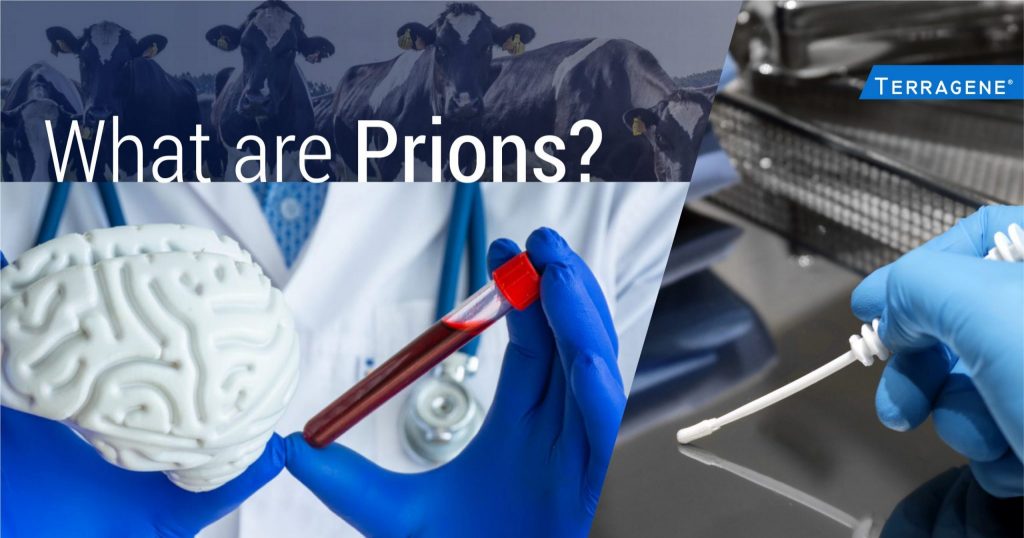WHAT ARE PRIONS?
Over the past few years, the infection control field has been substantially transformed because of the emergence of prions, infectious agents that have revolutionized paradigms, leading to changes in washing, hygiene, disinfection and sterilization processes.
In particular, what are prions? Prion is an English acronym derived from the words “protein” and “infection”, and was coined in 1982 by Stanley B. Prusiner. The mode of action of these infectious protein particles is through the induction of a conformational change in a natural protein of the organism, PrPc, thus altering its functionality and originating an altered protein, called PrPSc, which is able to form aggregates. Prions are responsible for transmissible spongiform encephalopathies, a group of degenerative neurological diseases such as scrapie, Creutzfeldt-Jakob disease and bovine spongiform encephalopathy, also known as “mad cow disease.”
These infectious protein particles are propagated by the transmission of anomalous proteins with incorrect folding. When a prion manages to penetrate a healthy organism, it acts on the normal form of the same type of protein existing in the organism, modifying it and making it a prion. These newly formed prions can convert more proteins, causing a chain reaction that produces large amounts of the prion protein. The infected organism difficulties rely in the fact that prions do not cause a normal immune response, since it is a normal protein of the body, so it is not recognized as pathogenic.
In the recent years, this has caused prions to become the focus of study of multiple laboratories around the world and this has spread to the scientific field dedicated to infection control, especially in neurology and reprocessing of material and instruments dedicated to this health´s sector.

Other News


